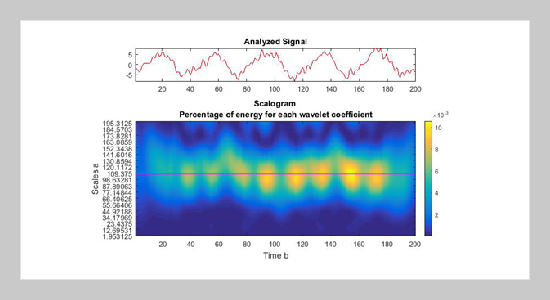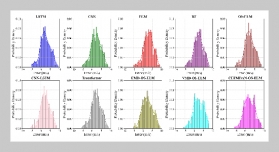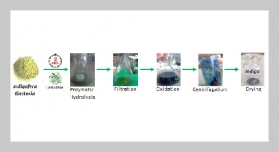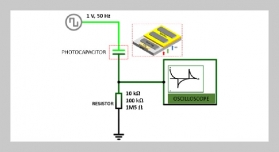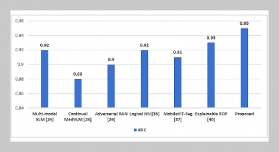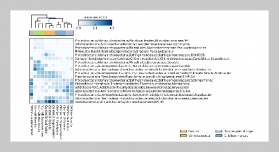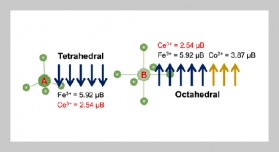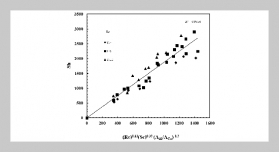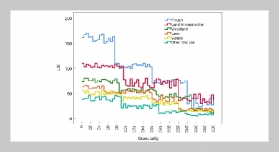- [1] M. Tiboni, C. Remino, R. Bussola, and C. Amici, (2022) “A review on vibration-based condition monitor�ing of rotating machinery" Applied Sciences 12(3): 972. DOI: 10.3390/app12030972.
- [2] G. Shen, W. Zeng, C. Han, P. Liu, and Y. Zhang, (2017) “Determination of the average maintenance time of CNC machine tools based on type II failure correlation" Ek�sploatacja i Niezawodno´s´c 19(4): DOI: 10.17531/ein.2017.4.15.
- [3] Y. Zhang, L. Mu, G. Shen, Y. Yu, and C. Han, (2019) “Fault diagnosis strategy of CNC machine tools based on cascading failure" Journal of Intelligent Manufactur�ing 30: 2193–2202. DOI: 10.1007/s10845-017-1382-7.
- [4] A. Althubaiti, F. Elasha, and J. A. Teixeira, (2022) “Fault diagnosis and health management of bearings in rotating equipment based on vibration analysis–a review" Journal of Vibroengineering 24(1): 46–74. DOI: 10.21595/jve.2021.22100.
- [5] C. Mongia, D. Goyal, and S. Sehgal, (2022) “Vibration response-based condition monitoring and fault diagnosis of rotary machinery" Materials Today: Proceedings 50: 679–683. DOI: 10.1016/j.matpr.2021.04.395.
- [6] J. Park, Y. Kim, K. Na, B. D. Youn, Y. Chen, M. J. Zuo, and Y.-C. Bae, (2022) “An image-based feature extraction method for fault diagnosis of variable-speed rotating machinery" Mechanical Systems and Signal Processing 167: 108524. DOI: 10.1016/j.ymssp.2021.108524.
- [7] N. Saravanan and K. Ramachandran, (2010) “Incipi�ent gear box fault diagnosis using discrete wavelet trans�form (DWT) for feature extraction and classification using artificial neural network (ANN)" Expert systems with applications 37(6): 4168–4181. DOI: 10.1016/j.eswa.2009.11.006.
- [8] B. Li, M.-Y. Chow, Y. Tipsuwan, and J. C. Hung, (2000) “Neural-network-based motor rolling bearing fault diag�nosis" IEEE transactions on industrial electronics 47(5): 1060–1069. DOI: 10.1109/41.873214.
- [9] Y. Kang, C.-C. Wang, Y.-P. Chang, C.-C. Hsueh, and M.-C. Chang. “Certainty improvement in diagno�sis of multiple faults by using versatile membership functions for fuzzy neural networks”. In: Advances in Neural Networks-ISNN 2006: Third International Sympo�sium on Neural Networks, Chengdu, China, May 28-June 1, 2006, Proceedings, Part III 3. Springer. 2006, 370–375. DOI: 10.1007/11760191_55.
- [10] X. Lou and K. A. Loparo, (2004) “Bearing fault diag�nosis based on wavelet transform and fuzzy inference" Mechanical systems and signal processing 18(5): 1077–1095. DOI: 10.1016/S0888-3270(03)00077-3.
- [11] N. Saravanan, S. Cholairajan, and K. Ramachandran, (2009) “Vibration-based fault diagnosis of spur bevel gear box using fuzzy technique" Expert systems with appli�cations 36(2): 3119–3135. DOI: 10.1016/j.eswa.2008.01.010.
- [12] Y. Lei and M. J. Zuo, (2009) “Gear crack level identifica�tion based on weighted K nearest neighbor classification al�gorithm" Mechanical Systems and Signal Processing 23(5): 1535–1547. DOI: 10.1016/j.ymssp.2009.01.009.
- [13] G. Shen, C. Han, B. Chen, L. Dong, and P. Cao. “Fault analysis of machine tools based on grey relational analysis and main factor analysis”. In: Journal of physics: conference series. 1069. 1. IOP Publishing. 2018, 012112. DOI: 10.1088/1742-6596/1069/1/012112.
- [14] m. rezaee mousa, H. Javadian, and V. A. Maleki, (2016) “Investigation of Vibration Behavior and Crack Detection of a Cracked Short Cantilever Beam under the Axial Load" Amirkabir Journal of Mechanical Engi�neering 47(2): 1–12. DOI: 10.22060/mej.2016.599.
- [15] M. Rezaee, S. Lotfan, and V. A. Maleki, (2023) “Using disturbance function for vibration analysis of a beam with an open edge crack" arXiv preprint arXiv:2305.18297: DOI: 10.48550/arXiv.2305.18297.
- [16] M. Rezaee and V. A. Maleki, (2012) “Vibration analysis of a cracked pipe conveying fluid":
- [17] G. Eslami, V. A. Maleki, and M. Rezaee, (2016) “Effect of open crack on vibration behavior of a fluid-conveying pipe embedded in a visco-elastic medium" Latin Amer�ican Journal of Solids and Structures 13: 136–154. DOI: 10.1590/1679-78251986.
- [18] Z. Zhang and Q. Yang, (2022) “Unsupervised feature learning with reconstruction sparse filtering for intelligent fault diagnosis of rotating machinery" Applied Soft Computing 115: 108207. DOI: 10.1016/j.asoc.2021.108207.
- [19] E. Q. Wu, J. Wang, X.-Y. Peng, P. Zhang, R. Law, X. Chen, and J.-x. Lin, (2019) “Fault diagnosis of rotating machinery using Gaussian process and EEMD-treelet" International Journal of Adaptive Control and Sig�nal Processing 33(1): 52–73. DOI: 10.1002/acs.2952.
- [20] X. Jiang, Q. Song, H. Wang, G. Du, J. Guo, C. Shen, and Z. Zhu, (2022) “Central frequency mode decompo�sition and its applications to the fault diagnosis of rotat�ing machines" Mechanism and Machine Theory 174: 104919. DOI: 10.1016/j.mechmachtheory.2022.104919.
- [21] C. Rajeswari, B. Sathiyabhama, S. Devendiran, and K. Manivannan, (2014) “A gear fault identification using wavelet transform, rough set based GA, ANN and C4. 5 algorithm" Procedia Engineering 97: 1831–1841. DOI: 10.1016/j.proeng.2014.12.337.
- [22] D. Bordoloi and R. Tiwari, (2014) “Support vector ma�chine based optimization of multi-fault classification of gears with evolutionary algorithms from time–frequency vibration data" Measurement 55: 1–14. DOI: 10.1016/j.measurement.2014.04.024.
- [23] L. Lu, J. Yan, and C. W. de Silva, (2015) “Dominant feature selection for the fault diagnosis of rotary machines using modified genetic algorithm and empirical mode de�composition" Journal of Sound and Vibration 344: 464–483. DOI: 10.1016/j.jsv.2015.01.037.
- [24] O. D. Mohammed, M. Rantatalo, J.-O. Aidanpää, and U. Kumar, (2013) “Vibration signal analysis for gear fault diagnosis with various crack progression scenarios" Mechanical systems and signal processing 41(1-2): 176–195. DOI: 10.1016/j.ymssp.2013.06.040.
- [25] G. Jahangiri, S. R. Nabavian, M. R. Davoodi, B. N. Neya, and S. Mostafavian, (2020) “Effect of noise on output-only modal identification of beams" arXiv preprint arXiv:2008.10416: DOI: 10.48550/arXiv.2008.10416.
- [26] M. Hernandez-Vargas, E. Cabal-Yepez, and A. Garcia�Perez, (2014) “Real-time SVD-based detection of multi�ple combined faults in induction motors" Computers & Electrical Engineering 40(7): 2193–2203. DOI: 10.1016/j.compeleceng.2013.12.020.
- [27] Y. Tang, X. Xiao, X. Yang, and B. Lei, (2023) “Research on a small sample feature transfer method for fault di�agnosis of reciprocating compressors" Journal of Loss Prevention in the Process Industries 85: 105163. DOI: 10.1016/j.jlp.2023.105163.
- [28] Y. He, J. Huang, and B. Zhang, (2012) “Approximate entropy as a nonlinear feature parameter for fault diag�nosis in rotating machinery" Measurement Science and Technology 23(4): 045603. DOI: 10.1088/0957-0233/23/4/045603.
- [29] J. Xie, M. Sage, and Y. F. Zhao, (2023) “Feature selection and feature learning in machine learning applications for gas turbines: A review" Engineering Applications of Artificial Intelligence 117: 105591. DOI: 10.1016/j.engappai.2022.105591.
- [30] F. Hidalgo-Mompeán, J. F. G. Fernandez, G. Cerruela�Garcia, and A. C. Marquez, (2021) “Dimensionality analysis in machine learning failure detection models. A case study with LNG compressors" Computers in In�dustry 128: 103434. DOI: 10.1016/j.compind.2021.103434.
- [31] M. Mousavi, A. Chaibakhsh, A. Jamali, M. Ko�rdestani, and M. Saif, (2022) “A new fault diagno�sis approach for heavy-duty gas turbines" IEEE/ASME Transactions On Mechatronics 27(5): 3339–3349. DOI: 10.1109/TMECH.2021.3138834.
- [32] E. Eslami and H.-B. Yun, (2023) “Comparison of deep convolutional neural network classifiers and the effect of scale encoding for automated pavement assessment" Journal of Traffic and Transportation Engineering (English Edition) 10(2): 258–275. DOI: 10.1016/j.jtte.2022.08.002.
- [33] B. H. K. Masjidi, S. Bahmani, F. Sharifi, M. Peivandi, M. Khosravani, and A. H. Mohammed, (2022) “Re�search Article CT-ML: Diagnosis of Breast Cancer Based on Ultrasound Images and Time-Dependent Feature Ex�traction Methods Using Contourlet Transformation and Machine Learning": DOI: 10.1155/2022/1493847.
- [34] R. Iranmanesh, A. Pourahmad, D. S. Shabestani, S. S. Jazayeri, H. Sadeqi, J. Akhavan, and A. Tounsi, (2023) “Wavelet-artificial neural network to predict the acetone sensing by indium oxide/iron oxide nanocomposites" Sci�entific Reports 13(1): 4266. DOI: 10.1038/s41598-023-29898-x.
- [35] M. Rezaei, E. Rahmani, S. J. Khouzani, M. Rahman�nia, E. Ghadirzadeh, P. Bashghareh, F. Chichagi, S. S. Fard, S. Esmaeili, R. Tavakoli, et al., (2023) “Role of artificial intelligence in the diagnosis and treatment of diseases" Kindle 3(1): 1–160.
- [36] H. E. Chimeh, S. Nabavi, M. Al Janaideh, and L. Zhang, (2021) “Deep-learning-based optimization for a low-frequency piezoelectric MEMS energy harvester" IEEE Sensors Journal 21(19): 21330–21341. DOI: 10.1109/JSEN.2021.3102537.
- [37] E. Eslami and H.-B. Yun, (2021) “Attention-based multi�scale convolutional neural network (A+ MCNN) for multi-class classification in road images" Sensors 21(15): 5137. DOI: 10.3390/s21155137.
- [38] E. Eslami, H.-B. Yun, et al., (2022) “Improvement of mul�ticlass classification of pavement objects using intensity and range images" Journal of Advanced Transporta�tion 2022: DOI: 10.1155/2022/4684669.
- [39] C. Han and X. Fu, (2023) “Challenge and opportunity: deep learning-based stock price prediction by using bi�directional LSTM model" Frontiers in Business, Eco�nomics and Management 8(2): 51–54. DOI: 10.54097/fbem.v8i2.6616.
- [40] Y. Essam, Y. F. Huang, J. L. Ng, A. H. Birima, A. N. Ahmed, and A. El-Shafie, (2022) “Predicting stream�flow in Peninsular Malaysia using support vector machine and deep learning algorithms" Scientific reports 12(1): 3883. DOI: 10.1038/s41598-022-07693-4.
- [41] T. K. Kim, (2015) “T test as a parametric statistic" Ko�rean journal of anesthesiology 68(6): 540. DOI: 10.4097/kjae.2015.68.6.540.
- [42] P. Ebrahimi, A. Salamzadeh, M. Soleimani, S. M. Khansari, H. Zarea, and M. Fekete-Farkas, (2022) “Startups and consumer purchase behavior: Application of support vector machine algorithm" Big Data and Cogni�tive Computing 6(2): 34. DOI: 10.3390/bdcc6020034.
- [43] J. Cardoso-Fernandes, A. C. Teodoro, A. Lima, and E. Roda-Robles, (2020) “Semi-automatization of sup�port vector machines to map lithium (Li) bearing peg�matites" Remote Sensing 12(14): 2319. DOI: 10.3390/rs12142319.
- [44] M. Tanveer, T. Rajani, R. Rastogi, Y.-H. Shao, and M. Ganaie, (2022) “Comprehensive review on twin support vector machines" Annals of Operations Research: 1– 46. DOI: 10.1007/s10479-022-04575-w.


